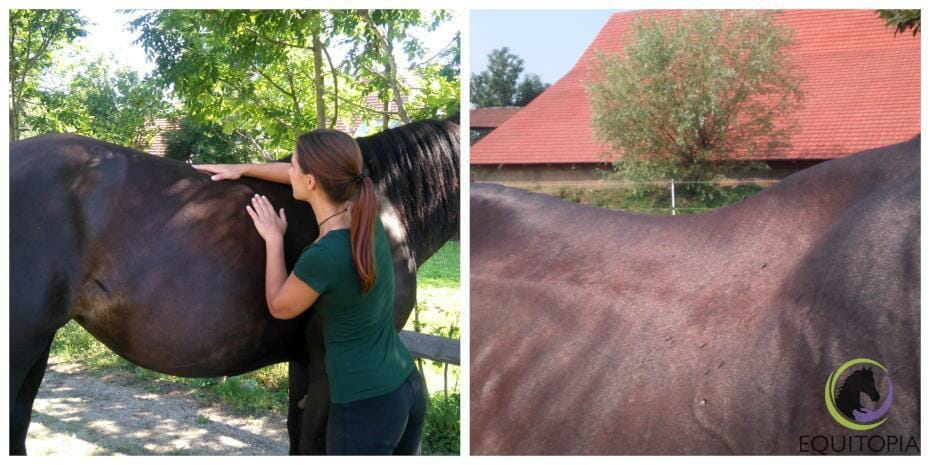RECOGNIZING BACK PAIN IN HORSES
Back pain is a very common issue in riding horses but unfortunately it often goes unnoticed by the rider. It doesn’t help much that horses are creatures who like to mask their pain and often fool humans into thinking there is nothing wrong with them when in fact they are experiencing pain. This is why it is important for horse owners to be very observant so they can learn to recognise back issues before they become a serious problem.
The horse’s back represents a bridge between the propulsive power of the hindquarters and the supporting role of the front limbs, which is why it is of vital importance to keep it as healthy as possible. Without a healthy back, a horse cannot move in a healthy way. A sore back that is put to work is a sure recipe for lameness in the long run.
Signs of back pain can be fairly non-specific and differ from horse to horse, but if your horse is displaying some of the below symptoms it might be time to enlist the help of an equine health professional to check for any issues.
POSSIBLE SIGNS OF BACK PAIN:
- Poor performance – stiff movement, refusing jumps, reluctance to collect or perform certain movements.
- Behavioural changes, like bucking, rearing, swishing the tail while being ridden.
- Displaying discomfort while tacking up.
- Sensitivity to touch on the back or avoiding being brushed in that area.
- Back muscle atrophy.
GETTING INTO THE HABIT OF DOING SIMPLE BACK CHECKS
As responsible horse owners we always have to be on the lookout for any possible issue that our horse might have. The best way to do this is to gain an idea of what is normal for our horse. Before tacking up, make a habit of running your fingers along the horse’s muscles, especially the muscles of the back. Make a mental note of how they feel. Are they soft to the touch, do they feel springy and elastic? Is the horse accepting our touch? Or does the back feel stiff with no give in the tissue? Is the horse pinning his ears back or trying to evade our touch? The long muscle along the back should feel similar to our thigh muscle – soft and pliable. For some horses a slightly higher muscle tone is normal, which is why we need to gain an idea of normality for our horse. In this way we will be able to tackle minor back issues before they become more serious.
Although back pain is very common in horses, we can take measures to avoid or at least minimize it.

MY TOP FIVE TIPS FOR KEEPING YOUR HORSE’S BACK HEALTHY:
- Don’t neglect the warm up and cool down routine. Warming up the muscles prior to asking them to work hard will give them a better chance to stay healthy.
- Make sure you check your saddle fit regularly. Improper saddle fit is one of the leading causes of back pain.
- Allow the horse plenty of turnout time. Free movement is essential for a healthy athlete.
- Learn how to do some simple stretching exercises for the back, like carrot stretches. These are fairly simple and horses usually like them.
- Make the work as diverse as possible, but always make sure your horse is moving in a balanced way. Variety is the spice of life and it can do wonders for the body. Go for a hack, jump some hurdles from time to time, walk uphill as well as downhill, use cavalletti training, the choices are endless.
IF YOU FOUND THIS POST INTERESTING, YOU MIGHT BE INTERESTED TO SEE MORE ON THIS TOPIC:
A video on recognizing top line syndrome at this link
And a course at this link on chiropractic care.
For more resources, check out the Equitopia membership program – click here




